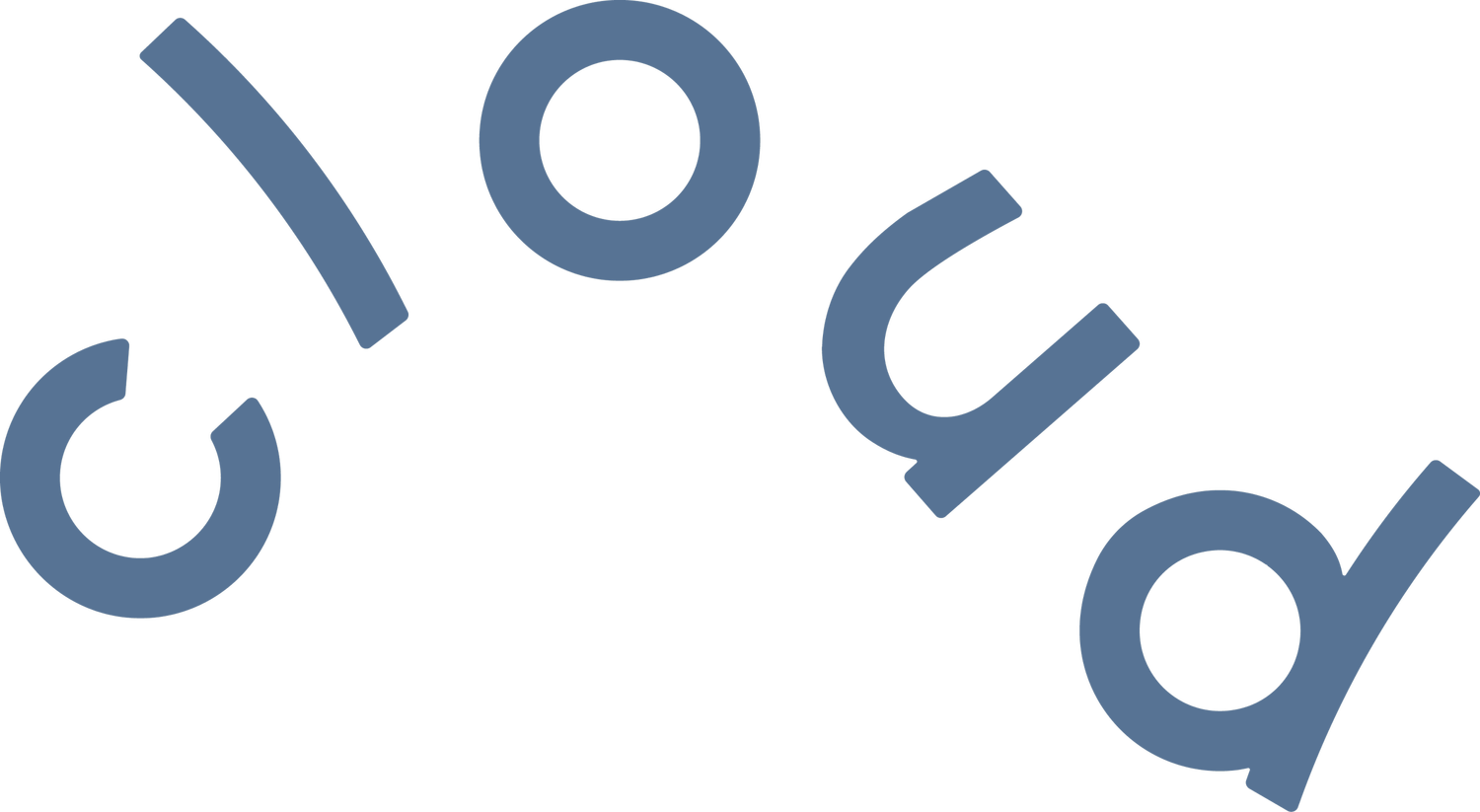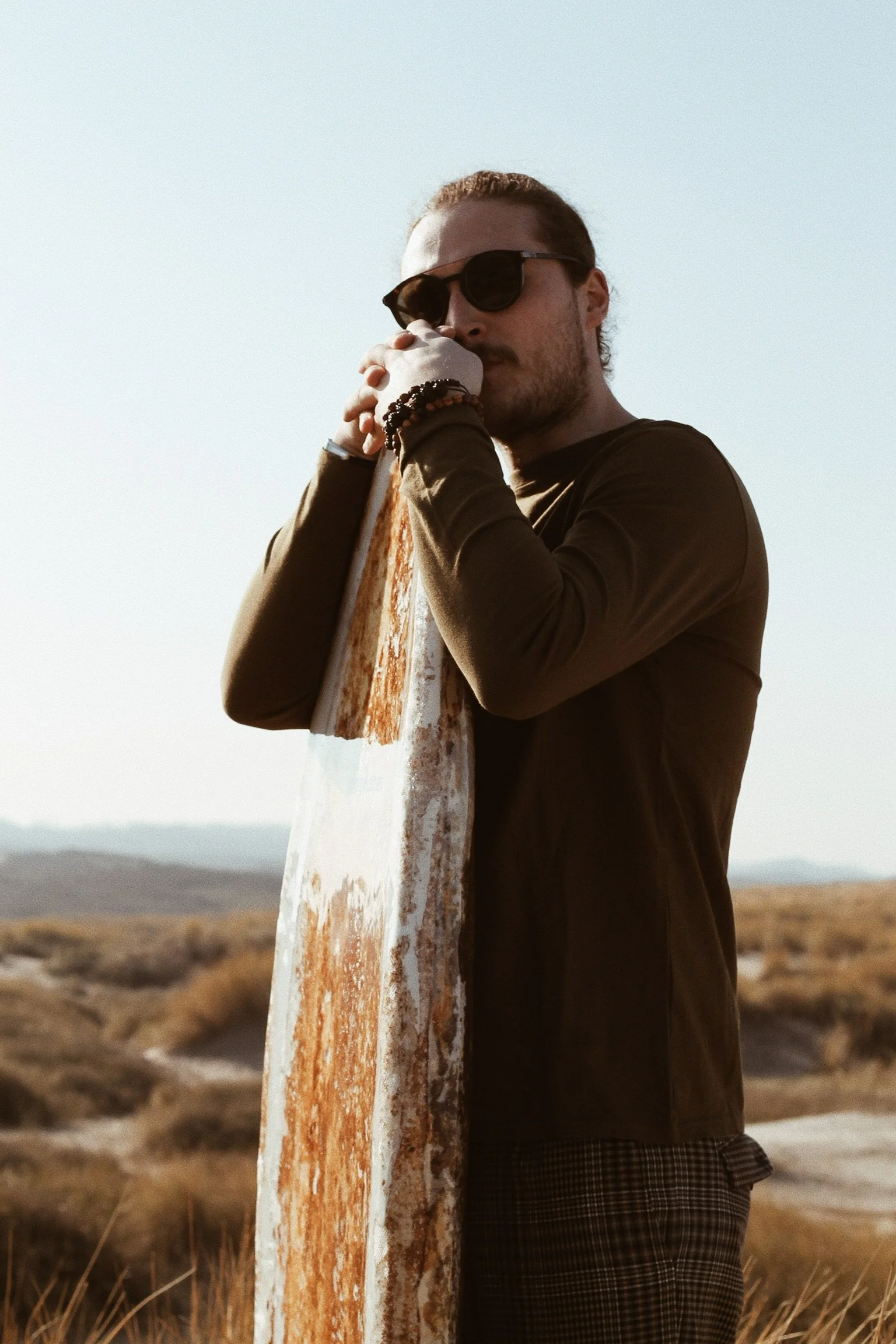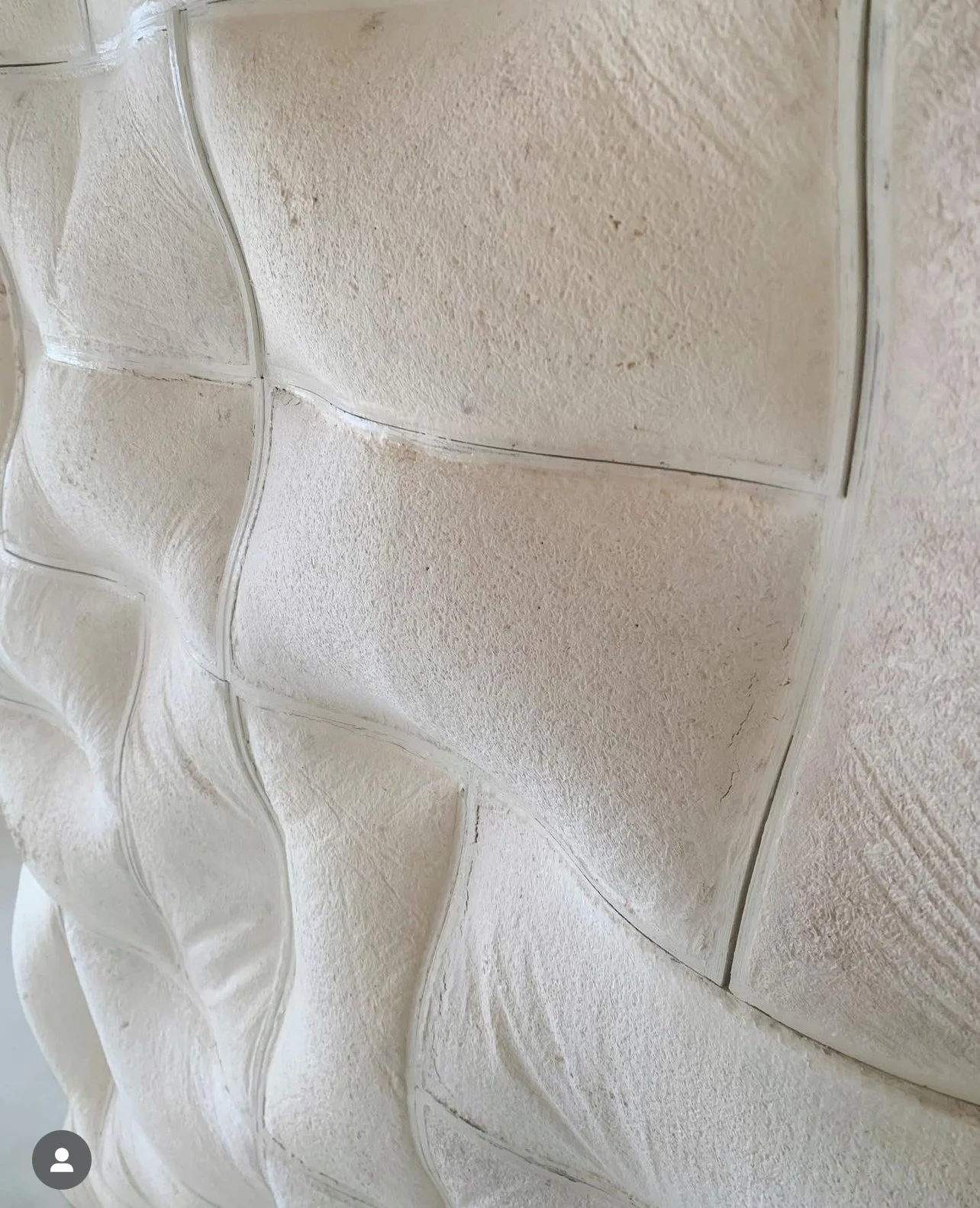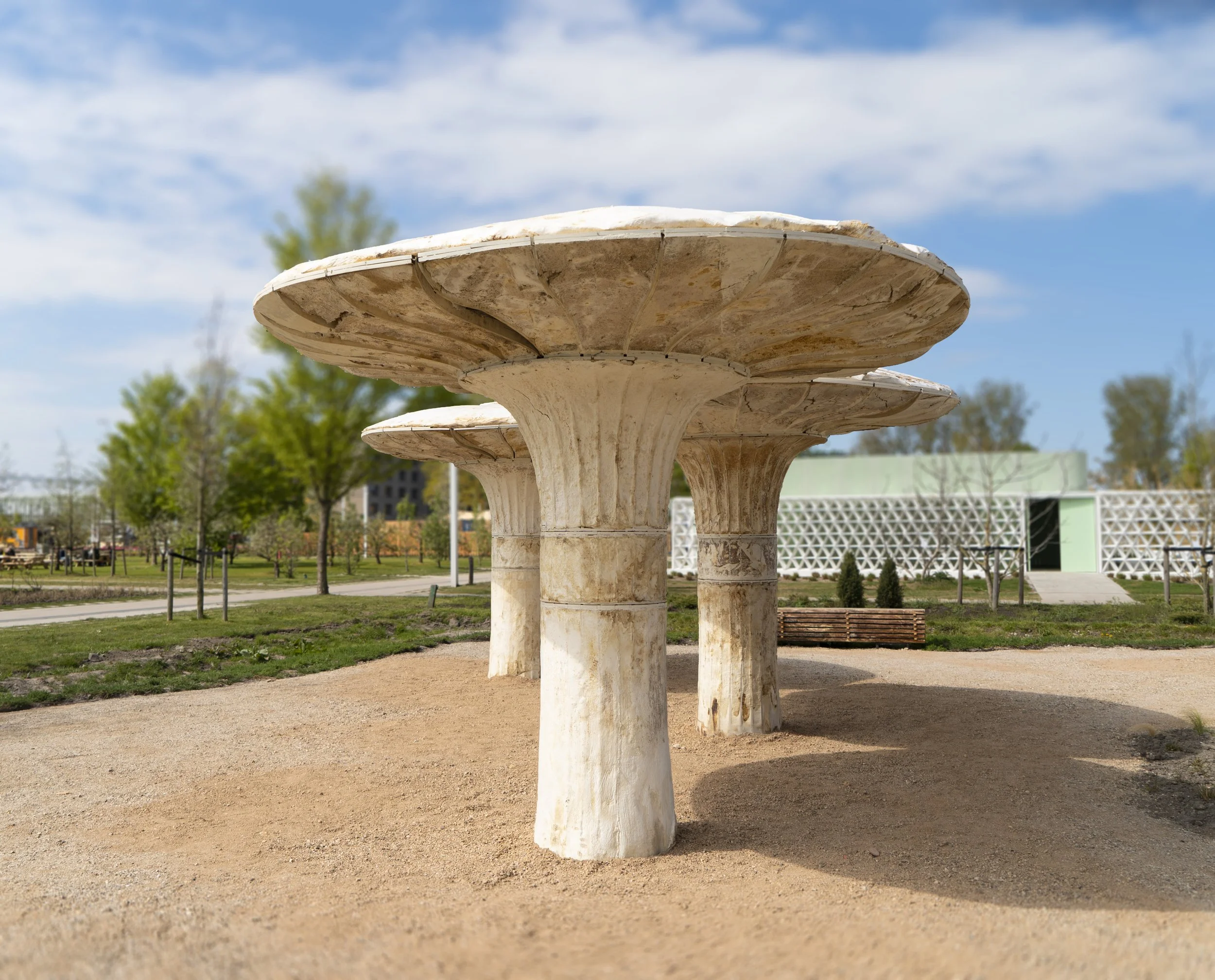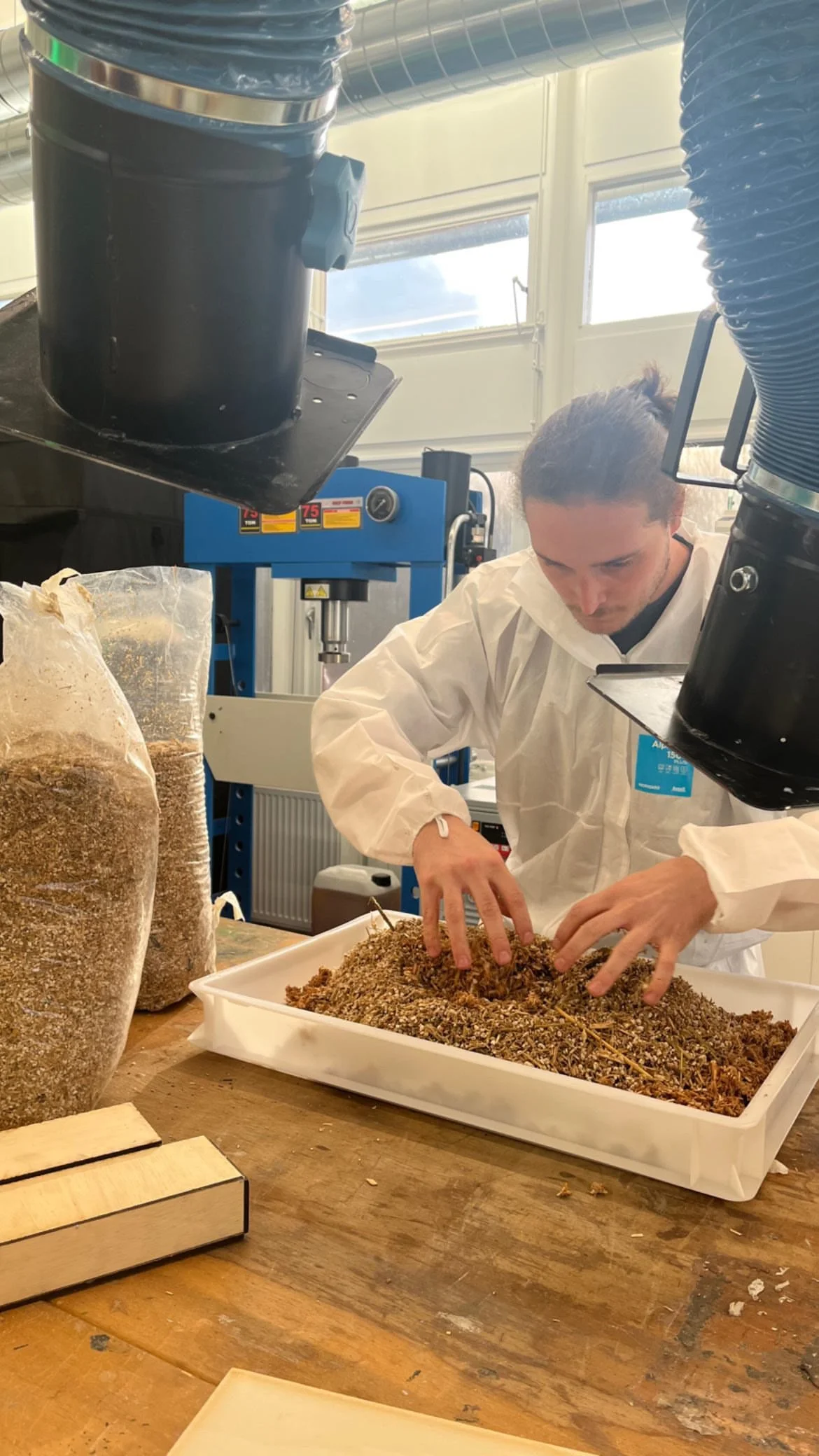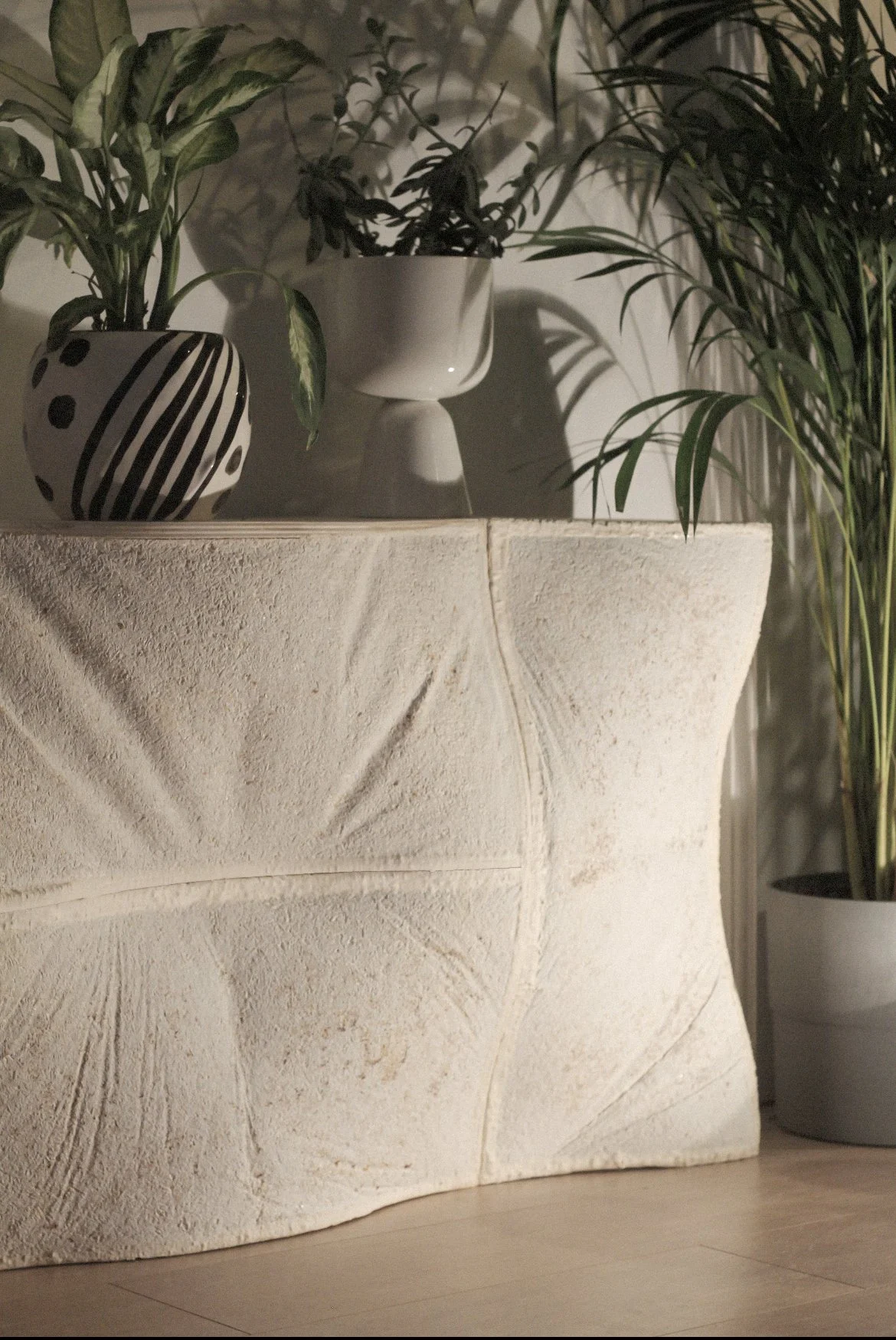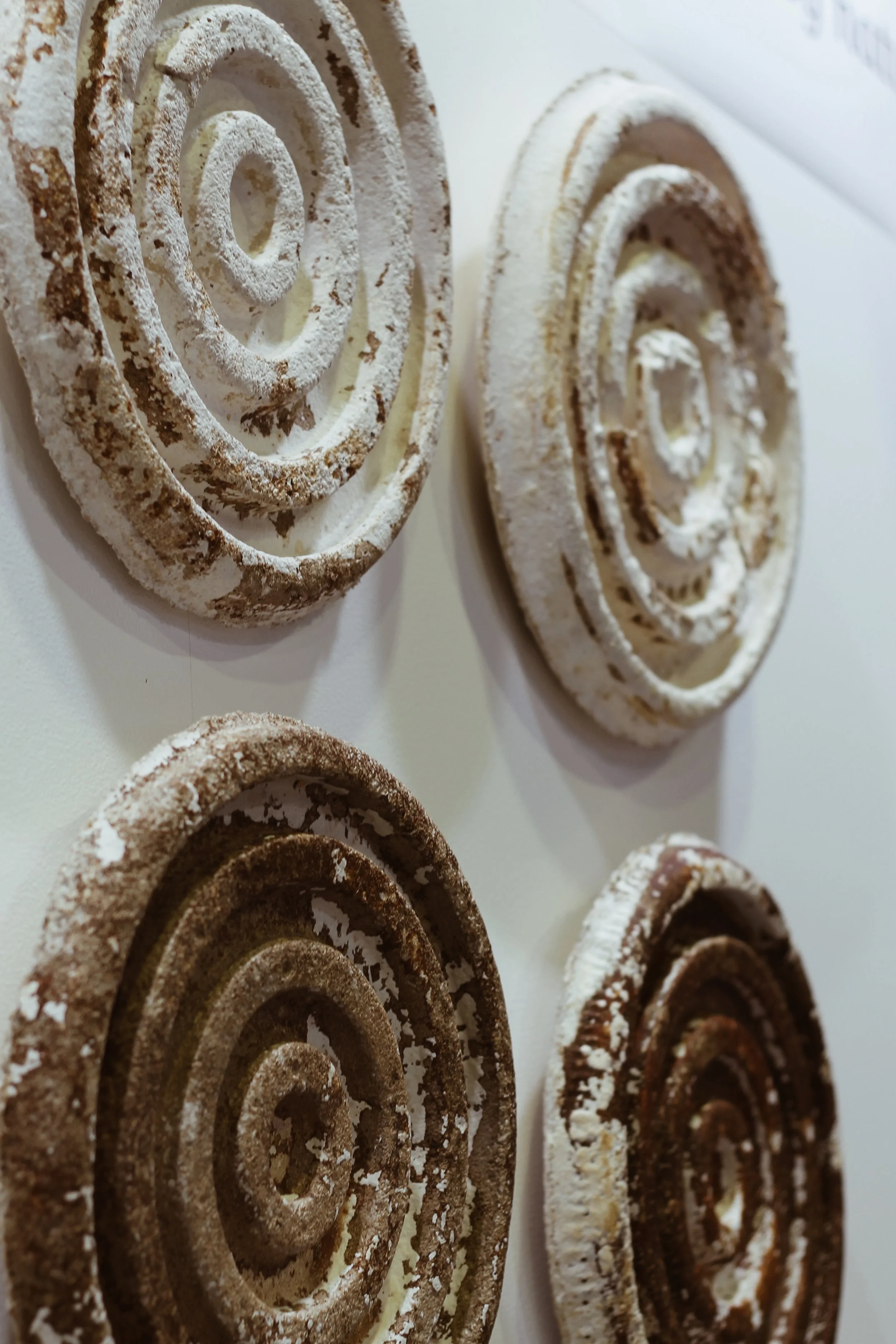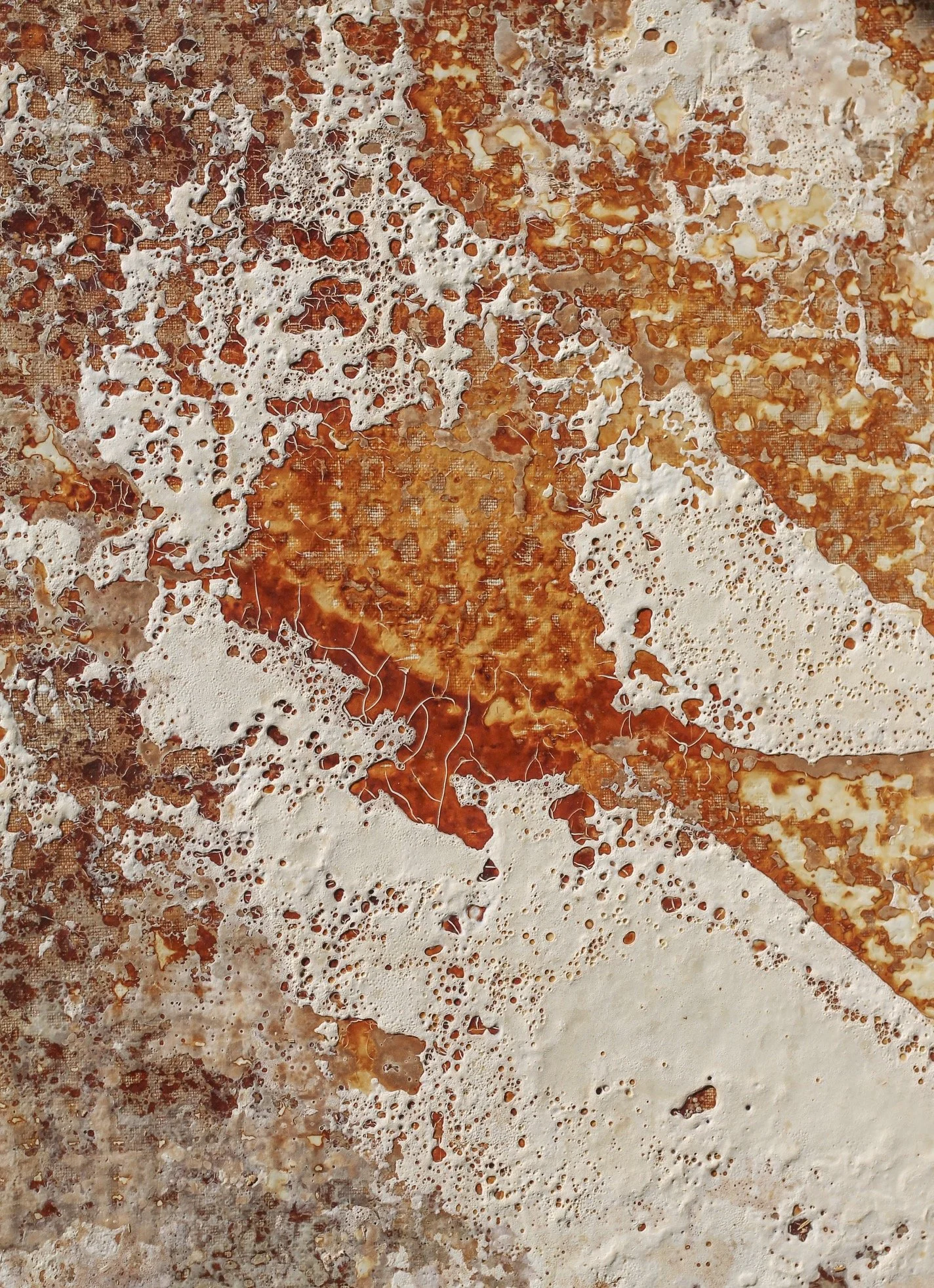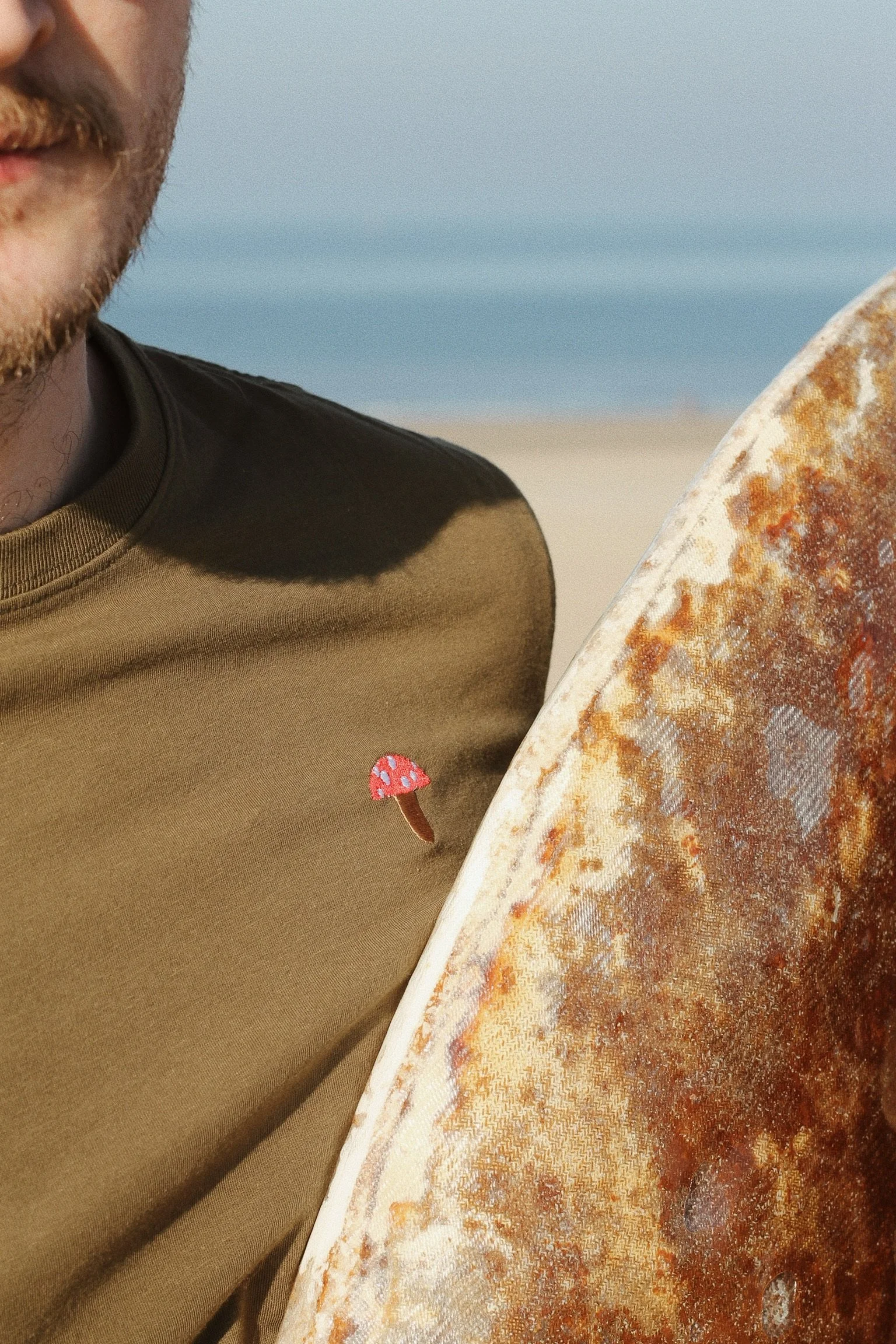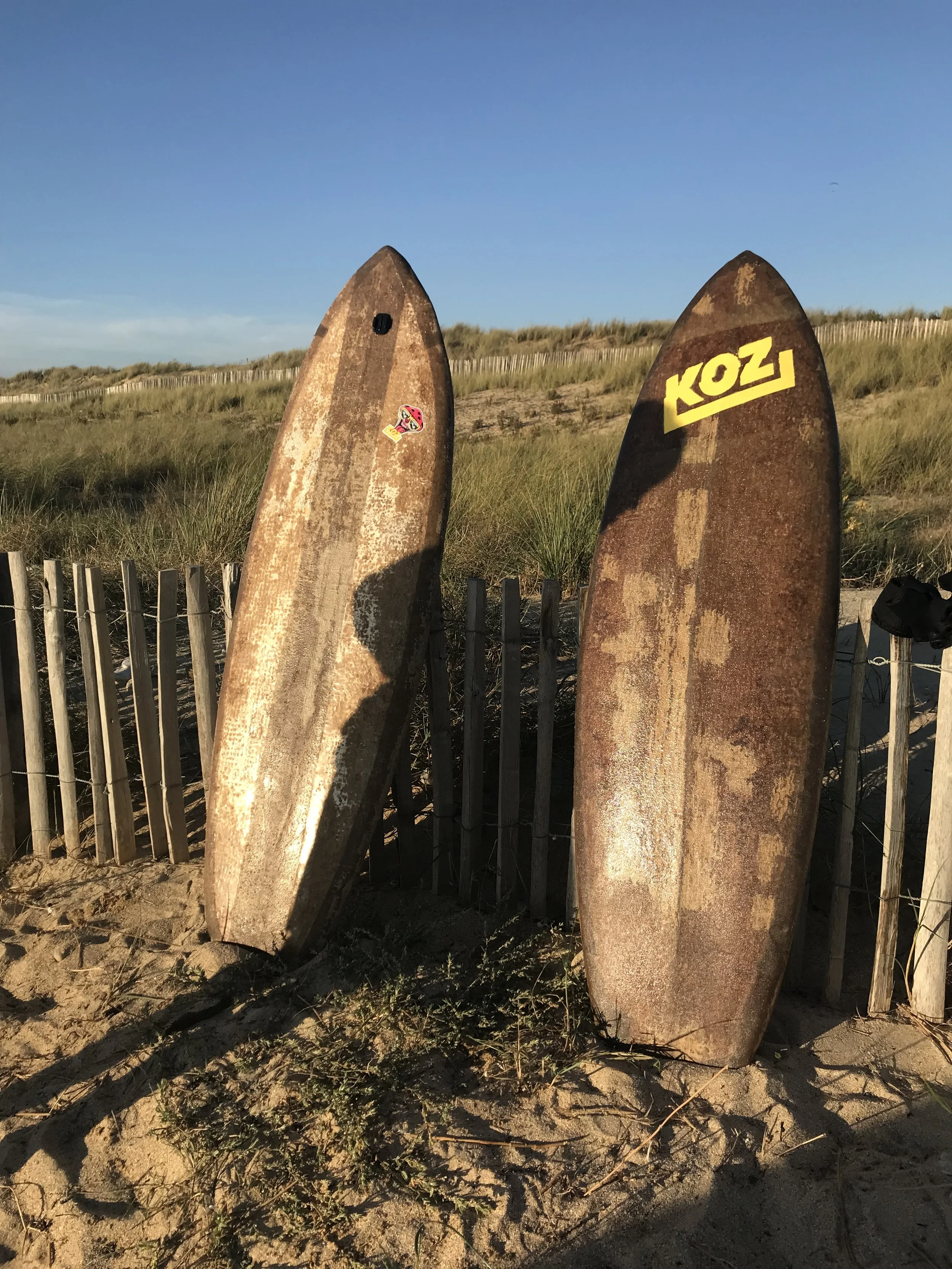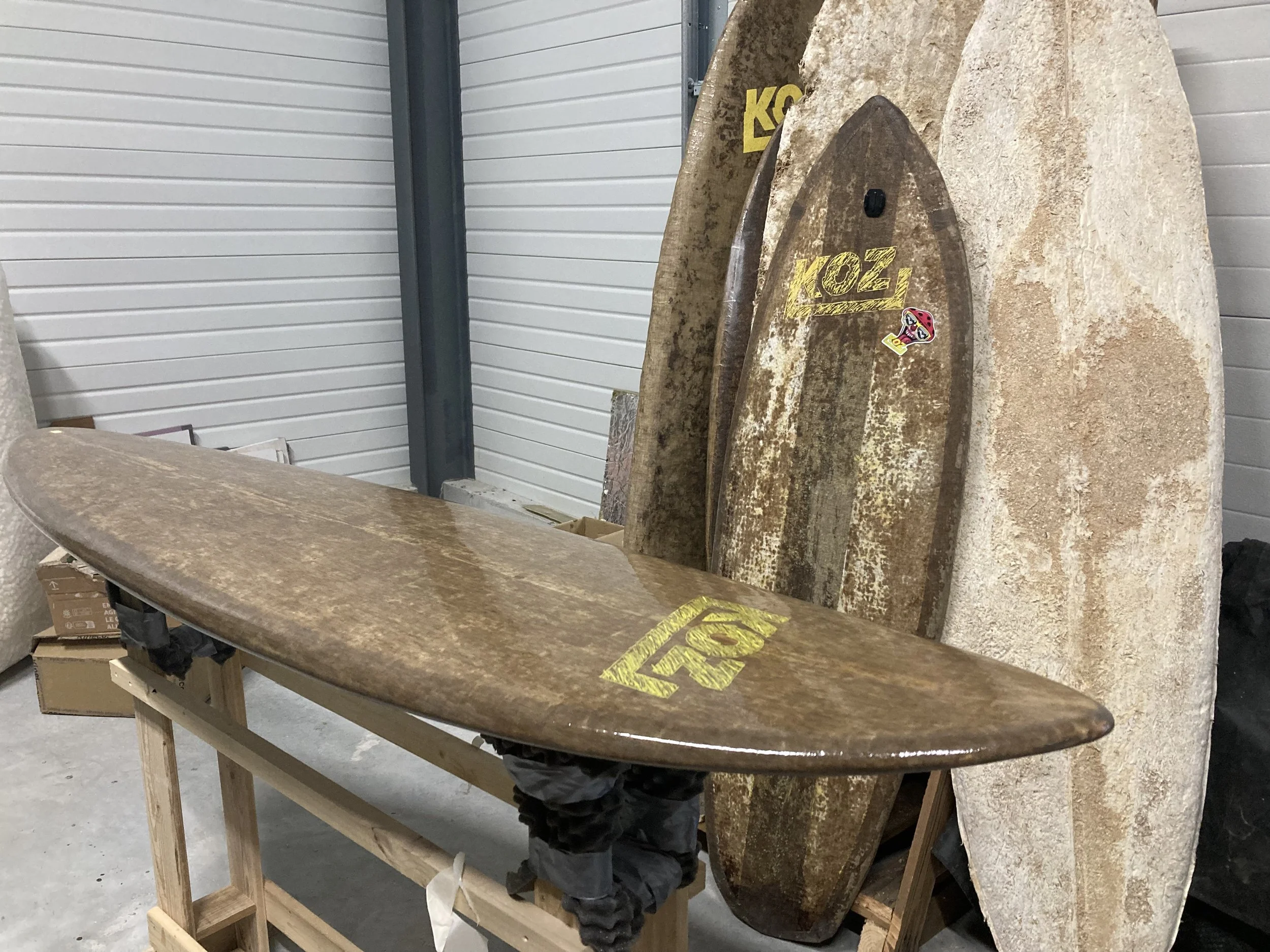Interview with Andy Cartier
We were in conversation with Andy Cartier, founder of Studio Cartier, a design studio based in Belgium. He is exposing his mycelium art and designs as part of the Fundamental Fungi exhibition at Cloud.
On December 8, Andy Cartier is giving a lecture and workshop about mycelium as a building material, where you are going to make your own objects out of mycelium.
Crafting the Future: Create Your Own Mycelium Object
This workshop is going to be a hands-on experience where designer Andy Cartier will guide you through the basics of working with mycelium, and together, we’ll create some amazing mycelium objects.
Sign ups are until Sunday, December 1st.
Nia: Can you start off by introducing yourself, your background and the work you do now?
Andy: I’m Andy Cartier, co-founder of Studio Cartier, an experimental design studio and consulting firm, that focuses on integrating natural materials, particularly mycelium, into contemporary design. My background is in furniture design, but over the years, my work has evolved to explore the intersection of sustainability, art, and material innovation. At Studio Cartier, we’re committed to pushing the boundaries of what’s possible with mycelium, using it not just as a material but as a medium to rethink how we design and produce objects.
Nia: How did you get into the mushroom space?
Andy: My journey into the world of mushrooms began about five years ago when I stumbled upon a growing interest in biomaterials. I was fascinated by how mycelium—a living organism—could transform waste materials into something functional and beautiful. It aligned perfectly with my interest in sustainable design and the challenge of working with living materials. From there, I started experimenting in my studio, creating prototypes, and collaborating with biologists and material scientists to refine the process. The more I worked with mycelium, the more I realized its potential, not just in design but in fostering a new paradigm for sustainable production.
Nia: What can people expect from the workshop, and what do you want them to leave with?
Andy: The workshop is designed to be hands-on and immersive. Participants will learn about the fundamentals of working with mycelium, from preparing the substrate to molding and nurturing it into a functional object. But beyond the technical aspects, I want people to leave with a sense of possibility. Mycelium is a metaphor for interconnectedness and regeneration, and I hope participants walk away inspired by how this material can reshape our approach to design, waste, and sustainability.
Nia: Can you tell me more about the mycelium art and the process?
Andy: Mycelium art is about embracing the unpredictable, organic nature of this living material. The process begins with a substrate—often agricultural byproducts like hemp or wood chips—mixed with mycelium spawn. The mixture is placed in molds and nurtured under controlled conditions to grow. As it grows, the mycelium binds the substrate together, creating a solid structure. After growth, it’s dried to stop the process and preserve the form. What I love about working with mycelium is its raw, organic aesthetic and its ability to adapt to various forms and textures, from stone-like panels to soft, velvety surfaces. Each piece feels alive, even in its final state.
Nia: How did the shelving system come to be, and what is the concept behind it?
Andy: The shelving system, Kinoko, was born out of a collaboration with Essential Glasses in Amsterdam that needed a display system. The concept was inspired by Japanese minimalism, balancing rough and natural elements like mycelium panels with clean, geometric oak beams and subtle brass details. The mycelium panels were produced from biomass collected locally, including elephant grass from Schiphol airport. The idea was to tell a story about materials and their origins, connecting the local context with the broader narrative of sustainable design. The offset, asymmetrical arrangement of the shelves adds a playful yet functional dynamic to the design.
Mycelium Shelf Kinoko by Studio Cartier for Essential Glasses to be seen in Cloud
Nia: Can you tell us more about the surfboard made out of mycelium?
Andy: The mycelium surfboard is a project we developed in collaboration with a startup in France focused on biobased materials. It’s a prototype that combines mycelium as the core material with natural fibers for reinforcement. The idea was to push the boundaries of what’s possible with biomaterials in sports equipment while maintaining functionality and aesthetics. The surfboard not only showcases the material’s strength and versatility but also serves as a conversation piece about sustainability in industries like surfing, where eco-friendly alternatives are urgently needed.
Nia: Lastly, what impact do you hope to have with your craft and design method?
Andy: I hope to inspire a shift in how we think about materials and production. My work is not just about creating objects; it’s about creating systems and narratives that challenge the status quo. By using materials like mycelium, I aim to demonstrate that sustainability and innovation can coexist beautifully. Whether it’s through workshops, collaborations, or installations, I want to show that design can have a regenerative impact, fostering a deeper connection between people, materials, and the planet.
